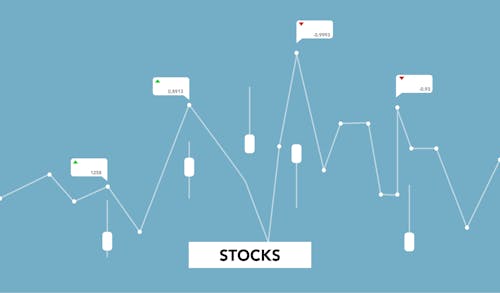Markets Buckle Then Bounce As Tariff Fog Settles Over 'Liberation Week'

Image Source: Pexels
MARKETS
What started as a textbook red screen risk-off session turned into a classic short covering late-day rescue, but don’t be fooled—the macro minefield ahead remains firmly intact.
Global markets kicked off the week with a nervous twitch as traders braced for President Trump’s April 2 “Liberation Day” tariff volley. With zero visibility on scope, scale, or targeting, investors did what they always do in the face of undefined policy risk—de-risk, deleverage, and duck for cover. Asian equities sold off hard, Europe followed suit, and U.S. futures opened soggy. Treasury yields dipped as safe-haven demand roared back, and gold—well, gold ripped through $3,100 like it was chasing 1980 all over again.
But just as it looked like the wheels were coming off again, the S&P 500 and Dow pulled a late-session reversal, clawing back into the green—part short-covering, part month-end rebalancing flows, and part blind optimism. Still, bond markets didn’t blink—10s held firm sub-4.25%, quietly reminding us that growth fears are alive and kicking under the hood.
Let’s cut to it: markets are caught in a volatility vortex fueled by tariff trauma, and the fog is thick. The Trump administration is toying with a “kitchen sink” framework—reciprocal tariffs based on everything from headline deficits and VAT asymmetries to FX misalignment and non-tariff barriers. But without a definitive rubric, price discovery becomes guesswork. You can’t hedge the unknown, and you sure as hell can’t price it.
That’s why liquidity is thin, conviction is paper-thin, and positioning is twitchy. Even seasoned macro desks are sitting lighter than usual—flat dollar bets, light equity exposure, and heavy gold allocations have become the base case playbook.
The first-order shock from tariffs is already priced in. Now, markets are pivoting—fast—to the second-order effects. And that’s where the real fog of war lies.
Will the pain land harder in the U.S. or abroad? Are we going to see a global inflation flare-up or a transitory pop? Nobody knows for sure—and that's precisely the problem.
We know this: sticker shock on autos is a near-certainty, and that could easily trigger a consumer pullback. Add capex hesitancy, margin compression, and a broad hit to corporate visibility, and suddenly, this isn't just about trade—it's about sentiment. Sentiment is the lead domino in the demand chain.
The inflation implications may be sticky or fleeting, but the growth drag has the potential to linger. That’s the real tradeoff—and until that picture clears, expect more chop than trend across macro markets.
Layer that over a Fed that’s stuck between a growth slowdown and sticky inflation, and you’ve got the makings of a macro stalemate. Yes, the core PCE deflator ticked higher again, but markets are still pricing in rate cuts—because the trade war overhang is starting to look like a deflationary wrecking ball.
Bottom line? The bounce was mechanical, not fundamental. 'Liberation Day' is shaping up to be less about freedom and more about who gets fragged. Until we get clarity on tariff structure, expect headline-driven whipsaw to remain the dominant market regime.
Keep your powder dry. The real positioning starts after the blast radius is defined.
FOREX MARKETS
The U.S. dollar caught a bid to start the week, thanks in part to classic position squaring and a tactical re-entry into greenback longs—especially where the second-order tariff effects are likely to bite hardest. Cue the Canadian dollar.
The loonie opened on the back foot Monday, and for good reason. The implications of U.S. auto tariffs for Canada are disproportionately severe, and that’s before the reciprocal hammer even falls. Auto trade isn’t just a sector in Canada—it’s a structural pillar of GDP. The majority of Canadian production flows south to the U.S., tied into a deeply integrated supply chain dating back to 1965. Plants aren’t built to serve one domestic corner—they're sized for the continental market. Retooling to pivot inward isn’t just costly—it’s operationally unviable in the near term.
Add to that a likely consumer sticker shock as tariffs ricochet back via retaliatory levies on U.S.-built vehicles, and it’s clear the loonie isn’t done repricing downside risk. This pair might still have legs with reciprocal tariff mechanics about to drop and volatility rising.
OIL MARKETS
Crude benchmarks ripped higher Monday as geopolitical risk hit a fresh fever pitch. On Sunday, Trump took to the mic, unleashing a one-two verbal strike that sent oil traders scrambling for hedges. First, he blasted Putin’s remarks questioning the legitimacy of Zelensky’s government and floated the idea of “secondary tariffs” on any country buying Russian oil—unless Moscow moves toward a ceasefire. Then, in a separate bombshell, he warned Iran that failure to finalize a new nuclear deal could lead to U.S. airstrikes.
With the geopolitical noise dialled up to decibel 8, who even needs a demand bounce when supply risk leaks into every energy market crevice?
But let’s not get carried away. If you think this rally has real legs, you’ve probably been listening to too much Dreamboat Annie. The fundamentals tell a different story.
OPEC+ production increases, cooling global growth, and looming U.S. tariff shockwaves are likely to act as a ceiling for crude. Demand-side softness is real, and the trade war's second-order effects—slower industrial output and consumer retrenchment—will all weigh.
Bottom line? April 2 might be “Liberation Day” in Trump’s playbook, but for oil markets, it could shape up to be Correction Day. Buckle up—this rally is built on a geopolitical tinderbox, not a macro foundation. In a nutshell, lower U.S. growth is fundamentally incompatible with sustainably higher oil prices.
More By This Author:
Tariff Trauma Engulfs Global Markets
Tariff Tantrums And Inflation Gut Punches Mark Wall Street’s Week From Hell
Through The Tariff Looking Glass: Inflation, Stagflation, And Identity Crisis



